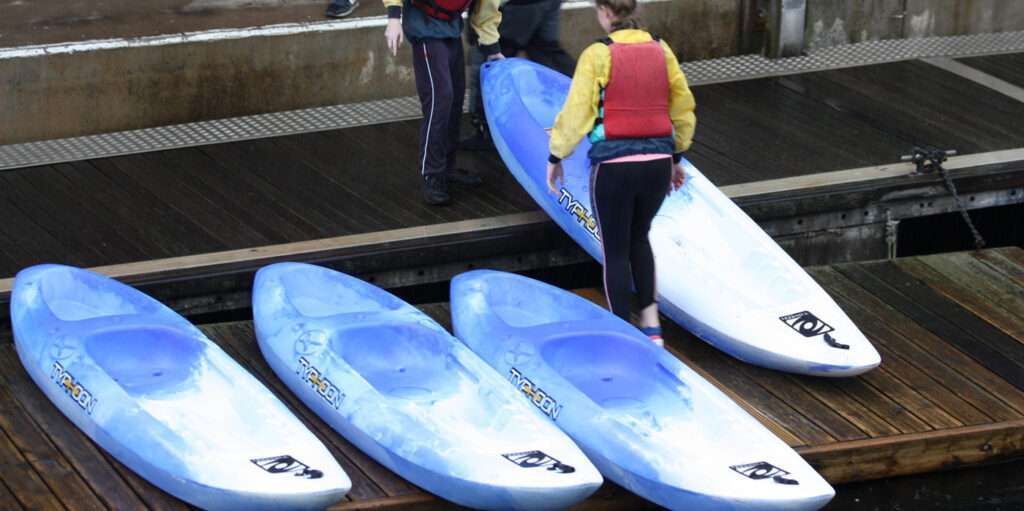It should be surprising that most canoe owners don’t know how to canoe. Unfortunately this is a fact that is evidenced by watching people fumble around in their canoes while out on the water. All too often these people only employ one type of canoe stroke and switch the side they are paddling on way too frequently. This guide will explain the skill progression needed to learn how to canoe.
Difficulty: Average
Time Required: A few months, maybe less, maybe more.
Here’s How:
- Know How to Properly Wear Your PFD
While you might be tired of hearing this first step, it is of vital importance. PFDs have a lot of straps and buckles and can be confusing for a beginner to put on. Furthermore, putting on the PFD doesn’t mean that it is adjusted properly. Knowing how to put on, adjust, and wear a PFD properly is a prerequisite for all water sports, especially for canoeing. - Learn How to Hold a Canoe Paddle:
This step sounds like it is should be too simple to list. Unfortunately, most people hold their canoe paddles wrong. Improperly holding and using a canoe paddle will lead to a loss of power, unnecessary fatigue, and in extreme cases tendinitis. Learn to hold the canoe paddle properly from the beginning to avoid a lot of unnecessary issues. - Learn the Anatomy of a Canoe Stroke
There are many different canoe strokes that can and should be called upon during every canoe outing. The one thing that all of the strokes have in common is their anatomy. That is, all canoe strokes are made up of the same parts. The three phases of every canoe stroke are the catch phase, the power phase, and the recovery phase. Having knowledge about the purpose of each phase will help speed up the learning curve toward mastery of each stroke. - Learn the Canoe Forward Stroke:
The first canoe stroke to learn is the forward stroke. This stroke is the basis for all other strokes. It is also the primary stroke that the canoeist seated in the bow of the canoe will use. Although basic, the forward stroke requires proper form which includes sitting up straight and the proper torso rotation. - Learn the Canoe J-Stroke:
The j-stroke is the first “advanced” stroke you should learn. It is crucial toward keeping the canoe tracking properly. The j-stroke is used by the canoeist in the stern of the canoe as a way to correct or compensate for the direction of the canoe. With each forward stroke the canoe wants to turn to the opposite side. The j-stroke helps to correct that tendency while keeping the canoe moving forward. - Learn the Canoe Draw Stroke:
Like the j-stroke, the draw stroke is meant to correct the canoe’s direction while keeping the canoeing moving forward. The draw stroke is effective when utilized by the paddler in the bow of the canoe as a way to help the paddler in the stern correct or compensate for the direction of the canoe. - Learn to Paddle in Tandem:
Perhaps one of the most difficult things about paddling a canoe is to learn to paddle in tandem. The paddler in the stern is the one who controls the canoe’s direction. It is for this reason that the more experienced canoeist should be in the stern. The bow and stern paddlers should paddle on opposite sides of the canoe. Proper use of the strokes listed above will alleviate the need to switch sides excessively. Switching sides therefore becomes a way to receive an even workout while canoeing and not a necessity for keeping the canoeing moving in a straight direction. - Final Step:
Have Fun!
Tips:
- Practice each step on both sides of the canoe.
- Practice with a friend.
- Be patient.
What You Need
- Canoe
- Paddle
- PFD
- Partner
- Patience

